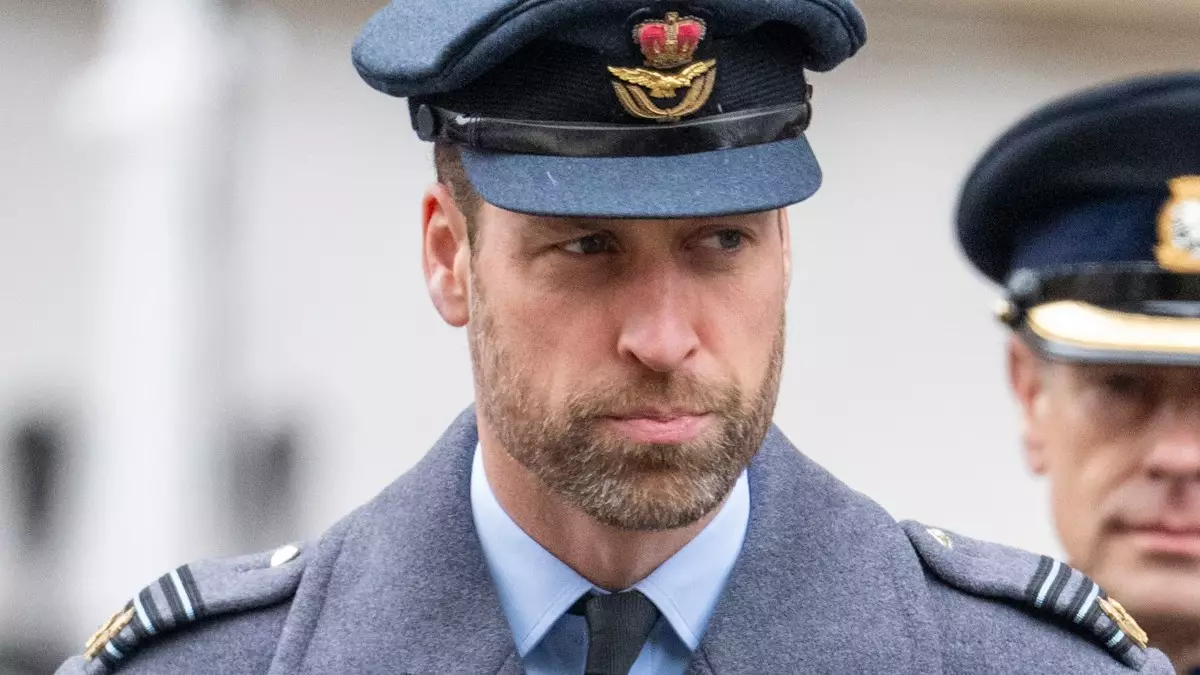In recent weeks, the British royal family has witnessed an intriguing transformation—Prince William has reemerged with a beard, charming both royal critics and fans alike. This marks a significant departure from his clean-shaven appearance, one he had maintained for nearly a decade, making the evolution of his grooming choices a subject ripe for discussion. As the Prince of Wales steps into his future role with more personal expression, the beard symbolizes a shift in royal tradition and the growing influence of modernity within the monarchy.
The sight of Prince William sporting facial hair was met with a surge of excitement and intrigue, particularly during the recent Remembrance Sunday service at the Cenotaph. Clad in his Royal Air Force uniform, his sharp beard became a focal point for observers, overshadowing even his noteworthy attire. Social media buzzed with admiration, especially on platforms like TikTok, where a video showcasing his appearance seemed to resonate instantly with audiences. An infectious wave of enthusiasm followed as viewers gushed over the former Prince’s new look, exclaiming how a simple beard could elevate one’s attractiveness. This sentiment highlights a broader trend in which facial hair is often associated with maturity and ruggedness, positioning William within this modern narrative.
The history of facial hair within the royal family adds further layers to this discussion. Prince Harry unveiled in his memoir, *Spare*, that facial hair has been a contentious issue among brothers. Harry’s own permission to wear a beard on his wedding day, a privilege William reportedly lacked, introduces an interesting dynamic underscoring how deeply entrenched traditions are in royal life. Historical precedents exist, as many royals throughout centuries have sported beards, including notable figures such as King Edward VII and King George V. Yet, while William acknowledges this rich lineage, he appears determined to carve out his own identity, blending tradition with a more contemporary approach to his public persona.
William’s decision to embrace facial hair after years of smooth-cheeked tradition raises questions about his motivations. According to insiders, this shift might align with his evolving vision for the monarchy—one that espouses relatability and openness. During his recent travels, including a significant visit to South Africa, William articulated a desire to embody a more modern interpretation of his royal duties, advocating for change while honoring the tradition inherited from his predecessors. His casual yet respectful demeanor seems aimed at softening the sometimes stiff image associated with royal responsibilities.
While the choice to grow a beard might seem trivial in the grand scheme of things, it holds substantial implications for how royals interact with the public. By redefining his appearance, William is subtly reinforcing a narrative that resonates with younger generations eager for authenticity and approachability within royal circles.
In this evolving chapter of royal representation, Prince William’s beard stands as more than just facial hair—it embodies a broader cultural shift and a progressive vision for the future of the monarchy. As he navigates his responsibilities and expectations, his grooming choices reflect a commitment to bridging tradition with modern values. Rather than adhering strictly to conventional royal images, William appears to be crafting a more relatable persona that speaks directly to contemporary society. The interaction between personal style and royal duty exemplifies how even the most minor changes can have far-reaching effects, symbolizing the evolving nature of the British monarchy. Future enthusiasts of royal history may look back at this period as the era when a simple beard ignited a movement toward a more accessible royal family, one that resonates with the public while still honoring its heritage.

